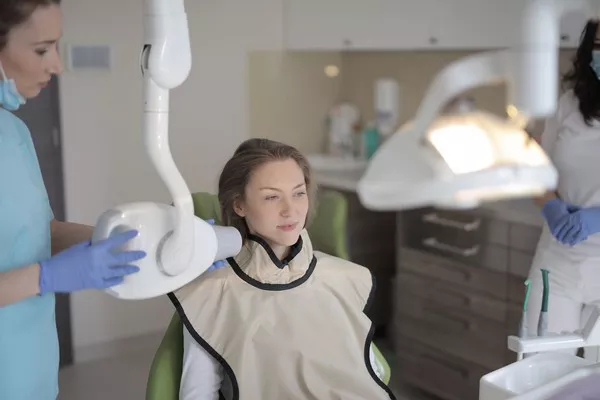A radiant, white smile is often associated with youthfulness and good oral hygiene. Many individuals seek effective teeth whitening methods to enhance their smile’s aesthetics. With numerous products and techniques available, it can be challenging to determine which option provides the best results. In this article, we will explore various teeth whitening methods, discuss their effectiveness, highlight important considerations, and provide tips for achieving a brighter smile.
Understanding Teeth Discoloration and Causes
Before delving into teeth whitening methods, it is crucial to understand the factors that contribute to tooth discoloration. The primary causes of teeth staining or yellowing include:
Extrinsic Stains:
Extrinsic stains occur on the outer layer of the tooth enamel and are typically caused by external factors such as certain foods, beverages (like coffee, tea, and red wine), tobacco use, and inadequate oral hygiene practices.
Intrinsic Stains:
Intrinsic stains develop within the tooth structure and may result from factors like aging, genetics, trauma, certain medications (such as tetracycline antibiotics), excessive fluoride exposure during tooth development, or dental conditions like enamel hypoplasia.
Recognizing the underlying cause of tooth discoloration helps determine the most appropriate teeth whitening method for optimal results.
Different Teeth Whitening Methods and Their Effectiveness
There are several teeth whitening methods available, ranging from over-the-counter products to professional treatments offered by dentists. Here are some common options and their effectiveness:
Whitening Toothpaste:
Whitening toothpaste contains mild abrasives and chemical agents that help remove surface stains. While they can provide some improvement in tooth color, their effectiveness is limited for deeper or more stubborn stains. Whitening toothpaste is generally suitable for maintaining the results of other whitening treatments.
Over-the-Counter Whitening Strips and Gels:
These products typically contain peroxide-based bleaching agents. They are applied directly to the teeth using strips or gels and are usually used for a specific duration each day over several weeks. Over-the-counter whitening strips and gels can provide noticeable improvements in tooth color, especially for mild to moderate extrinsic stains.
Take-Home Tray-Based Whitening Systems:
These systems involve custom-fitted trays that are filled with a bleaching gel provided by a dentist. The trays are then worn for a specified period each day over a few weeks. The professional-grade bleaching agents used in these systems can achieve more significant whitening results compared to over-the-counter options. They are particularly effective for addressing both extrinsic and mild intrinsic stains.
In-Office Professional Teeth Whitening:
This is a highly effective and quick teeth whitening method performed by a dental professional. It involves applying a high-concentration hydrogen peroxide gel to the teeth and activating it with a specialized light or laser. In-office teeth whitening treatments can produce dramatic results in a single session, making them ideal for individuals seeking immediate and noticeable whitening.
Important Considerations for Teeth Whitening
While teeth whitening methods can deliver impressive results, there are important considerations to keep in mind:
Dental Health Evaluation:
Before undergoing any teeth whitening treatment, it is essential to have a comprehensive dental examination. A dental professional will assess your oral health, identify any underlying dental issues, and determine if you are a suitable candidate for teeth whitening. Treating existing dental problems, such as cavities or gum disease, is crucial before pursuing whitening procedures.
Sensitivity Concerns:
Teeth sensitivity is a common side effect of many teeth whitening methods. If you have sensitive teeth or gums, it is advisable to consult your dentist before choosing a whitening option. They may recommend desensitizing measures or alternative treatments that minimize sensitivity.
Maintenance and Longevity:
Teeth whitening is not a permanent solution. The duration of results varies depending on factors such as oral hygiene practices, dietary habits, and lifestyle choices (e.g., tobacco use). It is important to follow good oral hygiene practices and avoid food and beverages that can cause staining to maintain the results for as long as possible.
Individual Factors:
The effectiveness of teeth whitening methods can vary among individuals. Factors such as the severity of discoloration, tooth enamel thickness, and underlying dental conditions can influence the outcomes. Consulting with a dental professional allows for a personalized assessment and recommendation tailored to your specific needs.
What product whitens your teeth the fastest?
When it comes to teeth whitening, the speed of results can vary depending on the specific product or method used. While there are different products available that claim to provide fast teeth whitening, it’s important to note that achieving significantly whiter teeth in a short period is not always possible or advisable due to the potential risks involved. Here are some options known for their relatively quicker whitening outcomes:
In-Office Professional Teeth Whitening:
In-office teeth whitening treatments performed by dentists are typically known for delivering immediate and noticeable results. These treatments involve the application of high-concentration hydrogen peroxide gels or other bleaching agents to the teeth, often in combination with specialized lights or lasers to activate the whitening process. In just one session, you can see a significant improvement in tooth color, making them one of the fastest methods for teeth whitening.
Professional Take-Home Tray-Based Systems:
Dentist-prescribed take-home tray-based whitening systems offer greater potency than over-the-counter alternatives. These systems provide custom-fitted trays and professional-grade bleaching gels to be used at home for a designated period each day. While they may not produce immediate results like in-office treatments, they can still deliver noticeable whitening effects within a few weeks of consistent use.
Whitening Strips with Higher Peroxide Concentration:
Over-the-counter whitening strips are widely available and can provide some degree of teeth whitening. Opting for whitening strips with higher concentrations of peroxide (the primary whitening agent) may potentially lead to faster results compared to those with lower concentrations. However, it’s essential to follow the instructions carefully and avoid using higher-strength strips excessively, as this can increase the risk of tooth sensitivity and irritation.
It’s important to remember that while faster whitening methods may yield quicker results, they may also carry higher risks of tooth sensitivity and tissue irritation. It is always advisable to consult with a dental professional before pursuing any teeth whitening treatment to ensure safety and effectiveness based on your individual dental health and needs.
Additionally, everyone’s teeth respond differently to whitening treatments, so results may vary. Factors such as the severity of staining, the type of discoloration, and individual variations in tooth structure can influence the speed and extent of whitening outcomes. Patience and consistent adherence to the recommended treatment protocol are key to achieving safe and effective teeth whitening results.
Related Topics:































